Russula cyanoxantha: the charcoal fungus
2 years ago · Updated 6 months ago
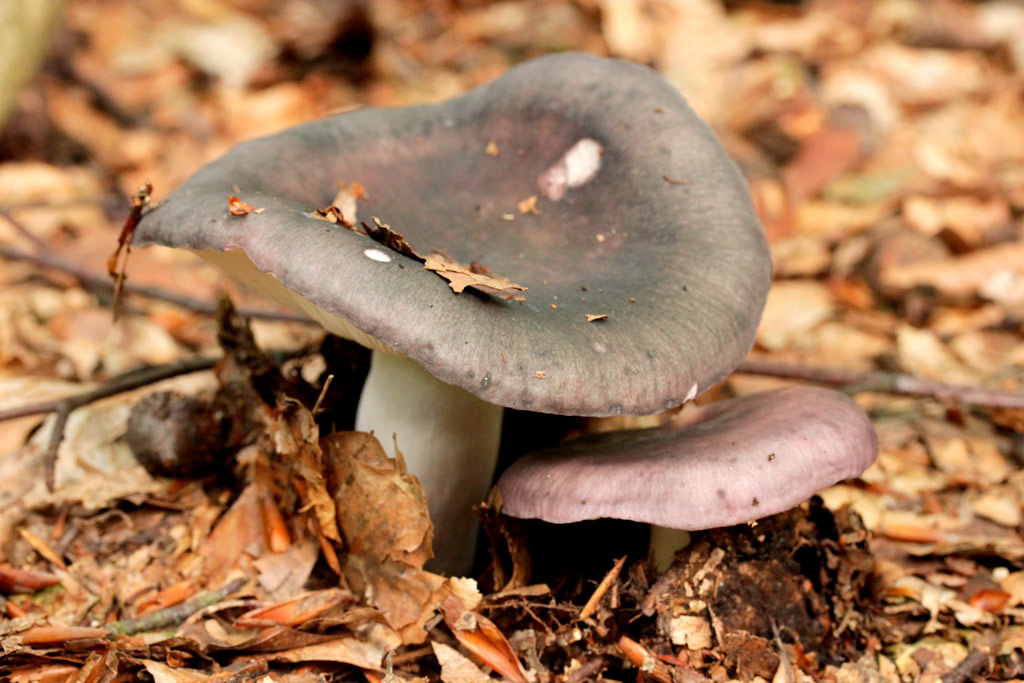
Russula cyanoxantha: the soft-bladed charcoal burner
The Russula cyanoxantha, commonly known as the charcoal burner, also has other regional names such as urretxa, urritz, boina de monte, ratón, seta de cerdo, puabra, palomins, carboeira, among many others. It is commonly found in deciduous and mixed forests, especially during the summer and fall months.
Among the species of the genus Russula, the carbonara stands out for a feature that is highly appreciated by mushroom pickers: its gills are soft, elastic, and do not break easily when touched, unlike other more fragile russulas. This characteristic makes it easy to identify and one of the most popular edible species in the group.
Its scientific name refers to the bluish and purplish colors with yellowish hues that usually appear on its cuticle, although the shade may vary depending on the environment and the maturity of the specimen. These color variations, along with its fleshy texture and mild aroma, make Russula cyanoxantha a mushroom that is both recognized and respected in the mycological world.
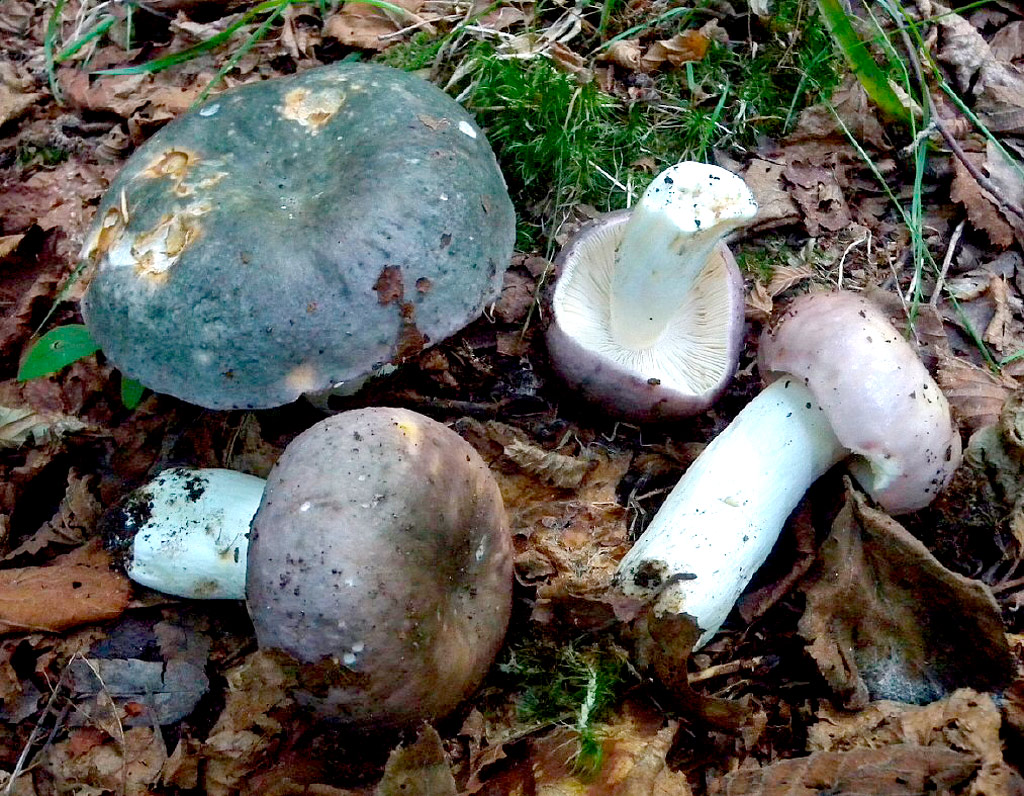
How to distinguish Russula cyanoxantha
- Cap: 5 to 15 cm in diameter, initially globular, becoming flat-convex and finally depressed in the center. Its cuticle, separable up to half the diameter, varies in shades of purple, with lilac or grayish green spots, never red. The texture is rough, with dark radial fibrils and a shiny appearance. Its edge, initially curved, becomes smooth and somewhat striated with moisture.
- Gills: Dense, forked and even veined when mature. Characterized by a lardaceous, elastic and greasy appearance, they vary in color from white to creamy white.
- Stem: Cylindrical, robust, rough, thickened in the middle and tapering at the base. In young specimens, it is solid and firm, becoming hollow and spongy with age. White in color, with pinkish tones at the base when mature.
- Flesh: Hard, consistent, brittle, white in color, turning grayish when cut. Under the skin, it has purplish tones. Its flavor is mild and sweet, with a subtle nutty aroma.
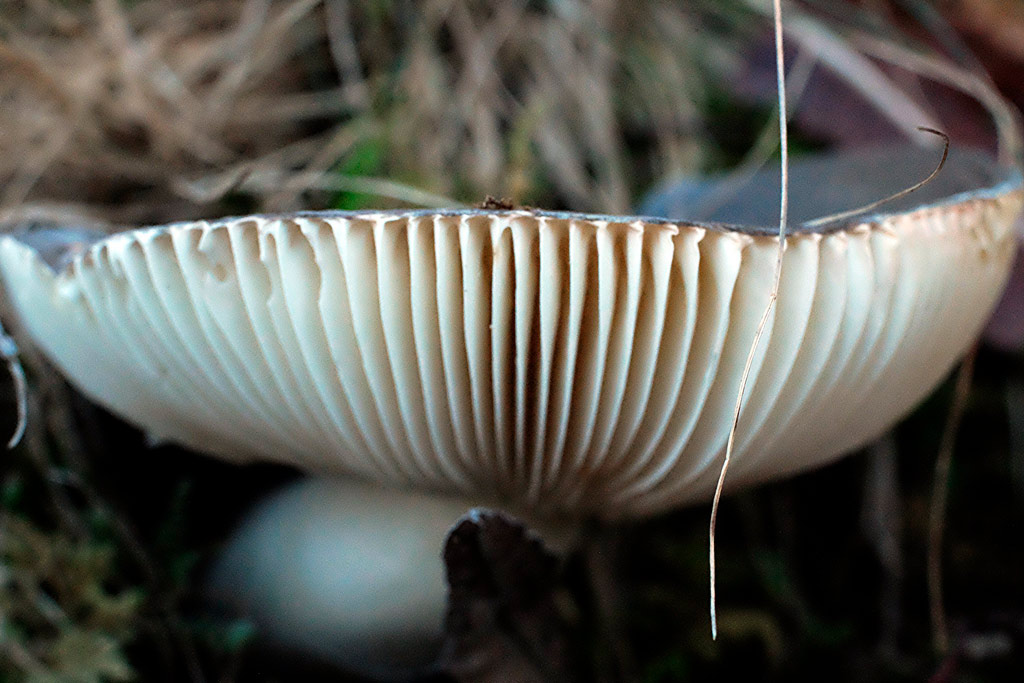
Habitat of Russula cyanoxantha
Russula cyanoxantha thrives mainly in deciduous forests, being particularly abundant in beech woods, although it can also be found in oak woods and, less frequently, in wild pine forests. It prefers to grow in the dense shade of trees such as beech, oak, and some conifers, showing a clear preference for deciduous species.
On the Iberian Peninsula, it is particularly common in northern Spain, especially in regions such as the Basque Country, Navarre, and the Cantabrian Mountains, where the climate is cooler and more humid. It grows in soils rich in organic matter, slightly acidic and well-drained, with constant humidity that favors its development.
Beyond Spain, this species is also common in France, particularly in the wooded regions of the Massif Central, the Vosges, and the French Pyrenees. In Germany, it is frequently found in the temperate forests of the south and southwest, such as in the Black Forest and Bavaria, where it shares similar habitats with other russulas.
As a mycorrhizal fungus, Russula cyanoxantha maintains a symbiotic relationship with tree roots, which not only facilitates its nutrition but also contributes to the overall health of the forest ecosystem in which it lives.
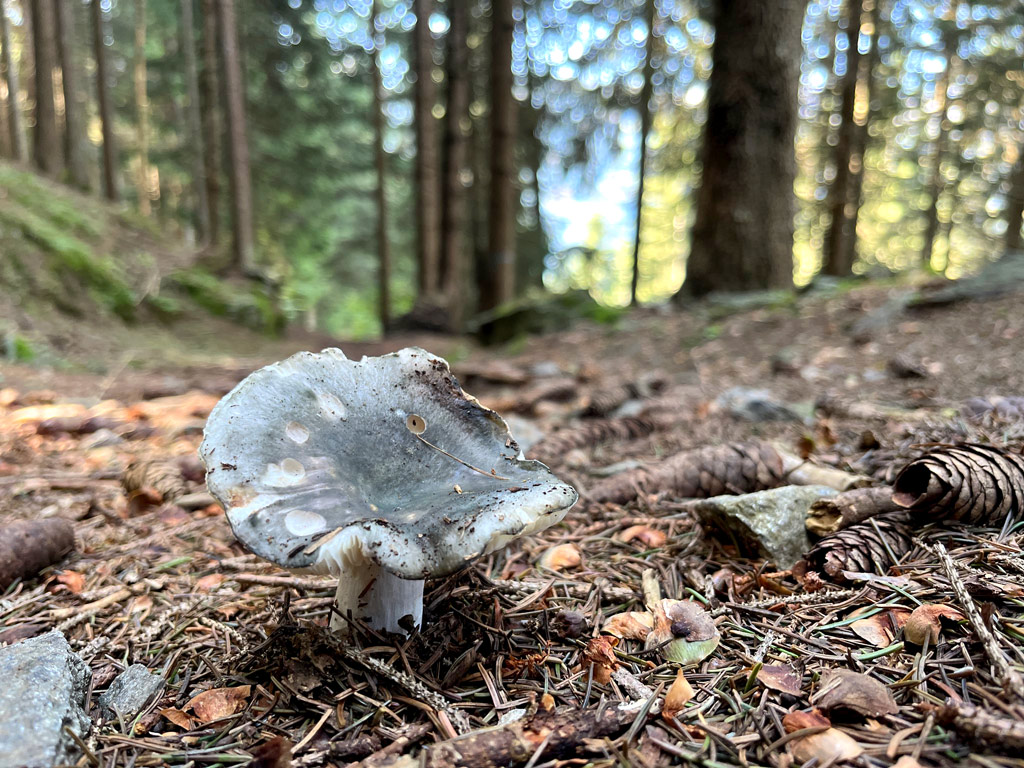
Season of the blue-green russula (Russula cyanoxantha)
The Russula cyanoxantha, known as the blue-green russula, has a long season that extends from spring to late fall. Although it may make its first appearances in May, its presence intensifies considerably after the summer rains and especially during the fall, when humidity and temperature conditions are more stable.
This mushroom tends to grow vigorously after periods of persistent rain or late summer storms, which act as triggers for its development. Its cycle can extend into November, although its appearance varies slightly from year to year, depending on the climate. Dry years or warm autumns can delay or limit its fruiting.
During its season, carbonera can be found alone or in small scattered groups, especially in moist deciduous forests. Its characteristic color, combined with its robust habit, makes it easily recognizable on the forest floor, where it stands out among the dead leaves and moss.
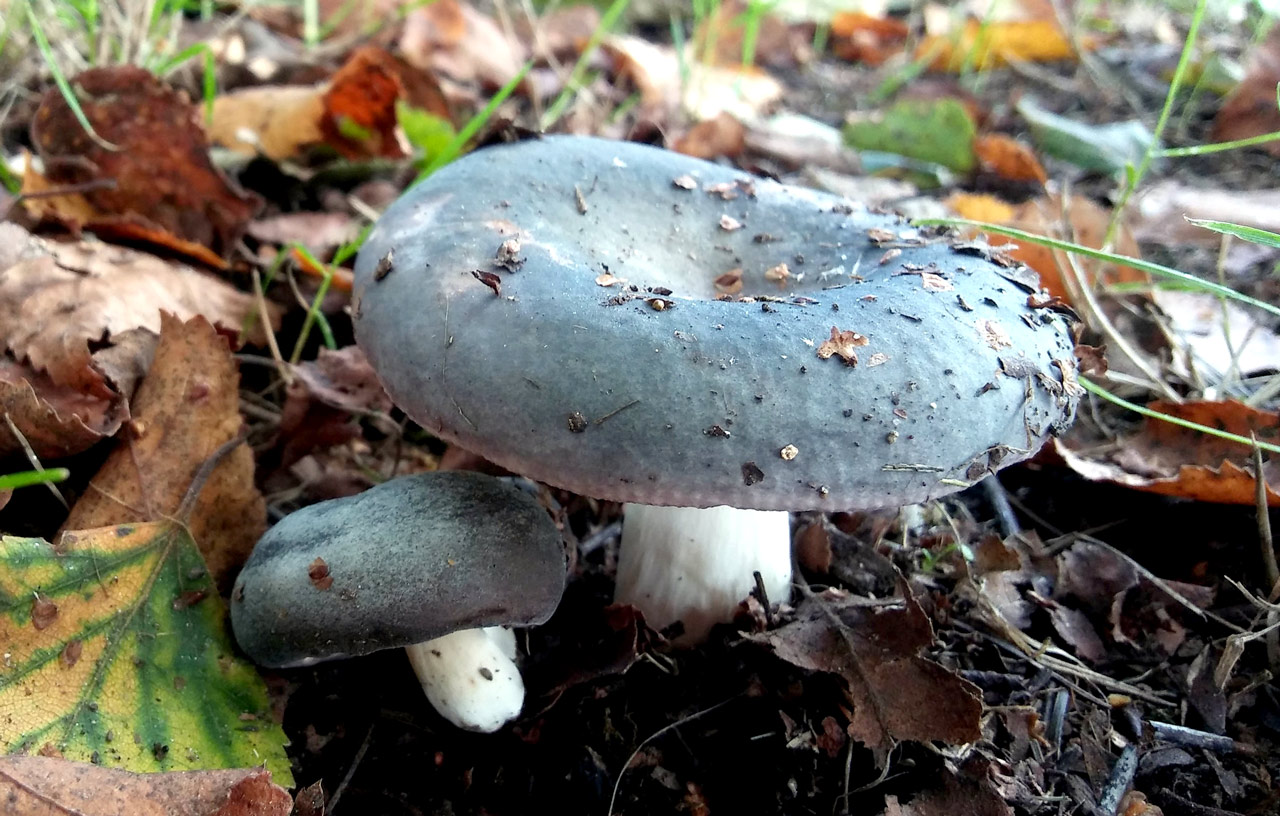
Confusion between Russula cyanoxantha and other mushrooms
It is crucial to differentiate Russula cyanoxantha from other mushrooms to avoid risks. Given the characteristics of russulas, it is its species companions that are most similar and with which we must be most cautious. Among the possible confusions are:
- Spicy or indigestible Russula: Russula ionochlora is distinguished by its greenish-blue color and cream-colored gills, with a pungent, non-sweet flavor. Meanwhile, Russula olivacea is olive green, purplish or brown in color, with broad gills and a mild flavor, although it may be indigestible for some people.
- Edible Russulas: Russula heterophylla has a green cuticle and non-laminated gills and is edible. Russula virescens has a green, cracked surface with non-lamellate gills and is an excellent edible mushroom. Similarly, Russula vesca has pink and cream tones with non-lamellate gills and is a good edible mushroom.
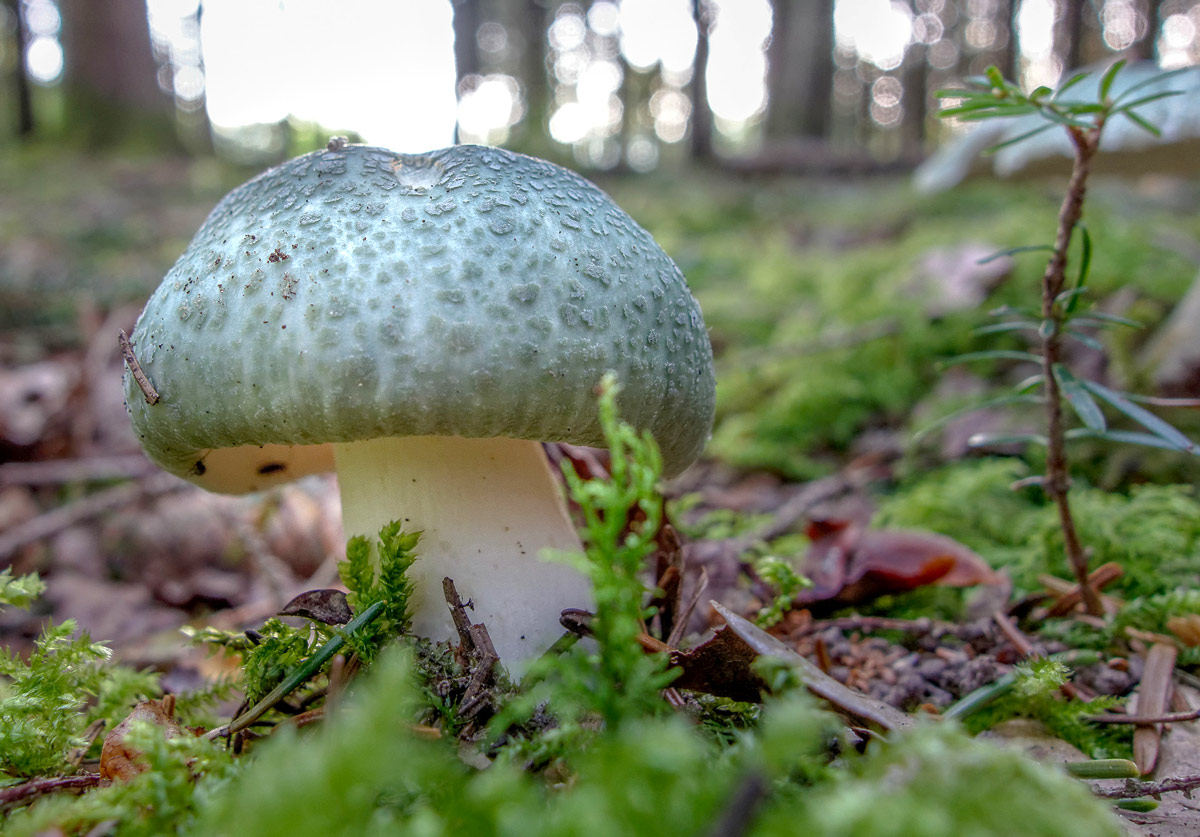
How to cook Russula cyanoxantha?
This mushroom has culinary properties that are appreciated by mycology enthusiasts. Its gastronomic quality, although slightly inferior to that of R. virescens, is excellent for raw preparations, salads, stews, or grilled. Its white, brittle flesh and nutty flavor make it versatile in the kitchen.
For those who wish to incorporate it into their diet, it is recommended to slice it into thin strips, drizzle with extra virgin olive oil, and add paprika to enhance its flavor. It can also be enjoyed in salads or as an ingredient in stews, highlighting its pleasant texture and mild flavor.
Recipes with the Carbonarius mushroom
Russula cyanoxantha salad
Ingredients:
- Russula cyanoxantha
- Extra virgin olive oil
- Balsamic vinegar
- Salt and pepper
- Fresh green leaves
- Dried fruit (walnuts, almonds, or hazelnuts)
Preparation:
- Wash and slice the Russula mushrooms into thin strips.
- In a bowl, mix olive oil, balsamic vinegar, salt, and pepper to taste.
- Add the Russula slices to the mixture and leave to marinate for a few minutes.
- Serve on a bed of fresh green leaves and add chopped dried fruit.
Risotto with Russula cyanoxantha
Ingredients:
- Russula cyanoxantha
- Risotto rice
- Vegetable stock
- Onion
- Grated Parmesan cheese
- Salt and pepper to taste
Preparation:
- Prepare a classic risotto with rice, chopped onions, and vegetable broth.
- While the risotto is cooking, clean and cut the Russula mushrooms into pieces.
- Add the Russula pieces to the risotto halfway through cooking.
- Season with salt, pepper, and grated Parmesan cheese before serving.
Pan-fried Russula cyanoxantha
Ingredients:
- Russula cyanoxantha
- Extra virgin olive oil
- Chopped garlic
- Chopped parsley
- Salt to taste
Preparation:
- Heat a pan with a little olive oil.
- Add the chopped garlic and let it brown slightly.
- Add the cleaned and chopped Russula mushrooms to the pan.
- Sauté for a few minutes, until tender.
- Sprinkle with chopped parsley and salt to taste before serving.
Russula cyanoxantha, prized for its taste and versatility in the kitchen, is a mushroom that deserves to be recognized and picked with care. Differentiating it from other similar species is essential to enjoy its culinary benefits without risk.
Photographs of Carbonera, R. cyanoxantha
This russula is very photogenic and has a wide range of colors. Do you have any photographs of carbonara mushrooms that you would like us to publish? Send them to us and we will publish them.
See you soon in the woods!

Te pueden interesar